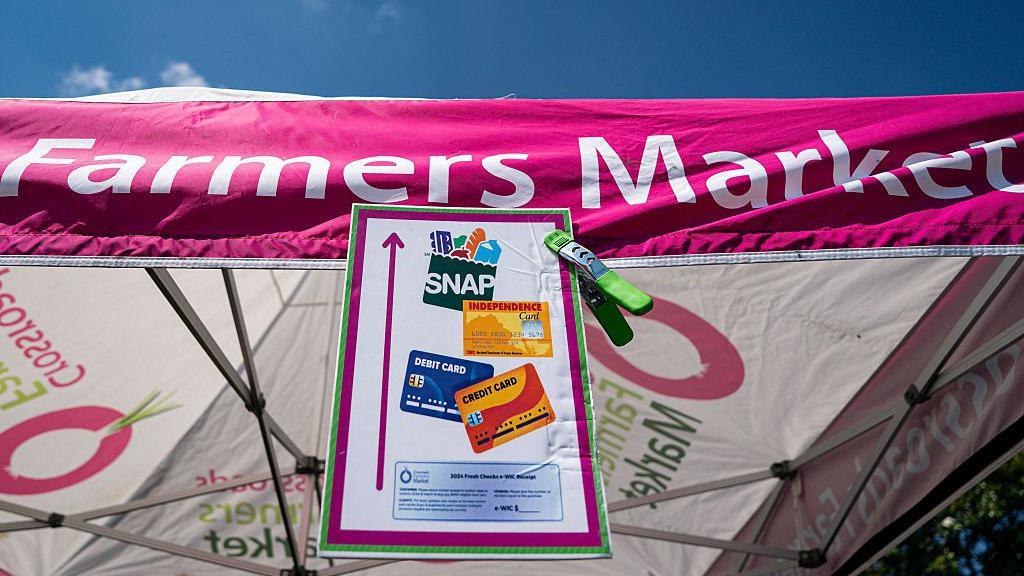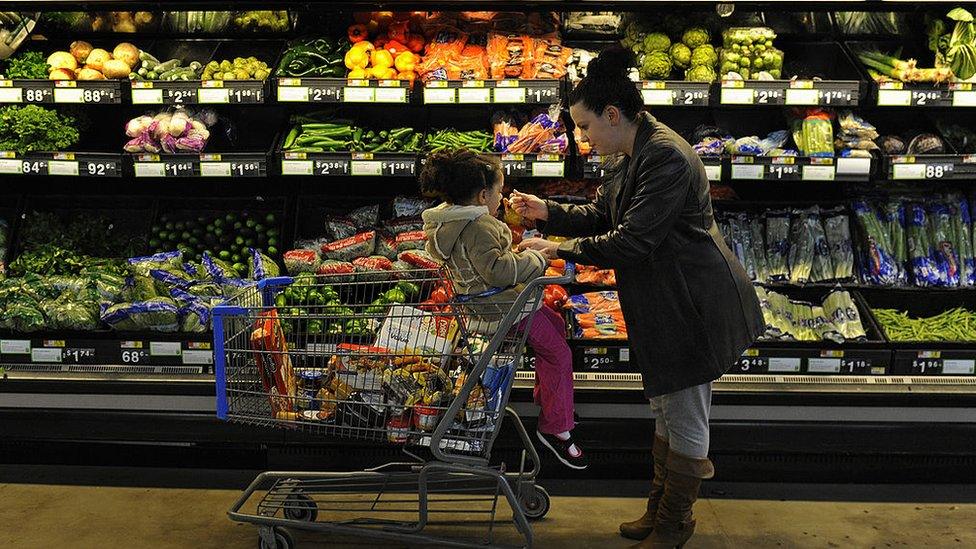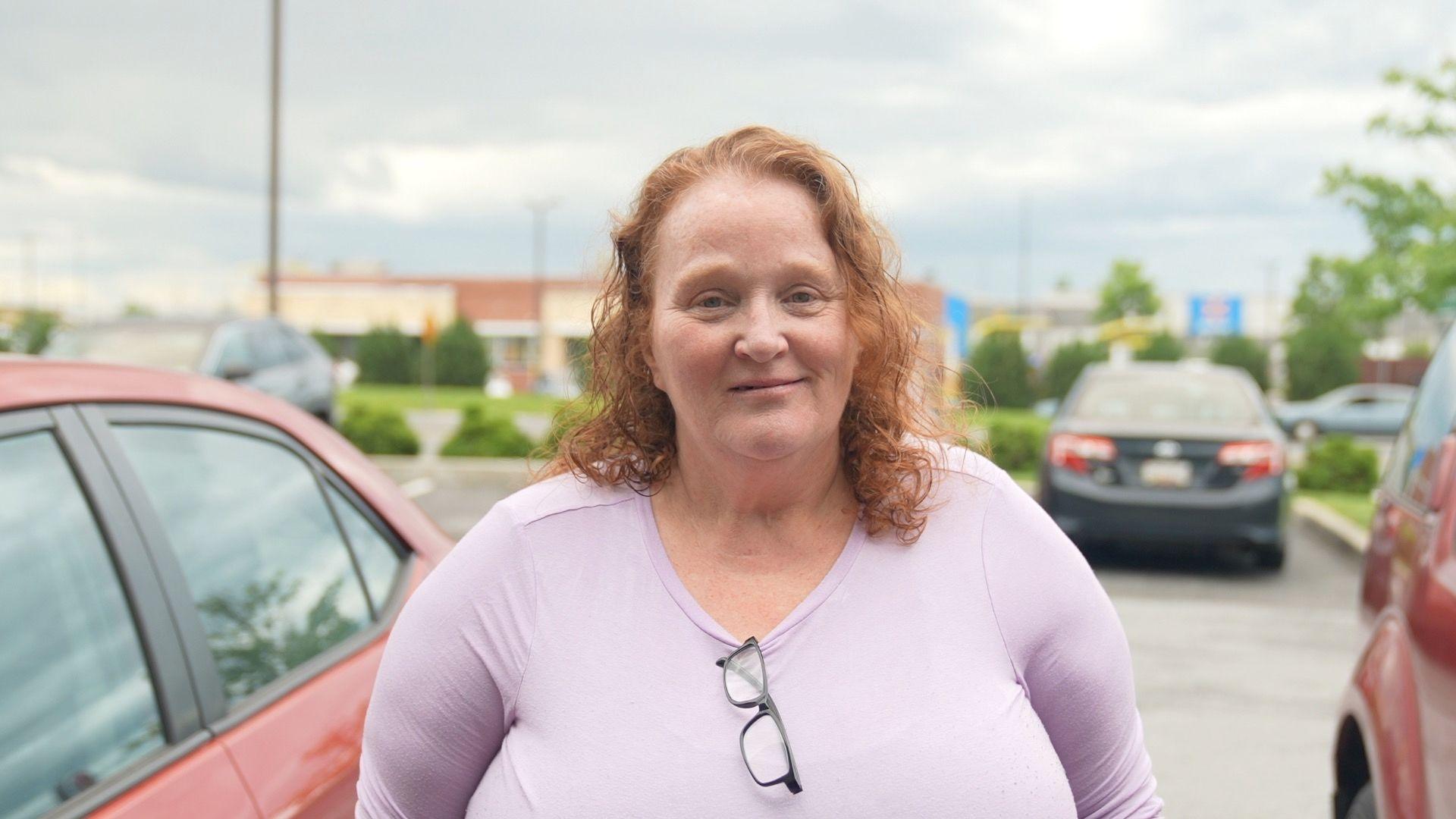SNAP benefits: When will the US government shutdown halt food stamps?

- Published
Recipes for dinners you can make for under a dollar, tips on how to turn one chicken into several meals for a family – these are the kinds of posts trending on social media as millions of Americans fear the US government's prolonged shutdown will cut people's food stamps.
"Start heading to the food pantry and your churches now, because the sooner you go, the more food you can get a hold of because as soon as people find out that the benefits are not paying out, they're going to those same pantries," Arvilla Beckworth, who goes by Single Mom Coach on TikTok, said in an online video.
The flood of posts came after the US Department of Agriculture (USDA), which oversees the Supplemental Nutrition Assistance Program (Snap), warned on 10 October that it would have "insufficient funds" to pay full benefits by the end of the month.
On 31 October, two federal judges, responding to separate lawsuits from a number of US states and a group of US cities and NGOS, ruled that suspending the food assistance benefits is likely unlawful.
A judge in Rhode Island said in his ruling that the USDA must tap into emergency funding to pay out benefits for November as soon as possible.
Separately, a Massachusetts judge told the Trump administration it has until 3 November to tell the court whether it will authorise using emergency funding to pay at least partial benefits.
However, it remains unclear if and when recipients will receive Snap funds for November.
What is SNAP and why does it matter?
Snap offersmore than 40 million low-income Americans money each month to buy groceries. According to the USDA, in 2023, almost three-quarters of Snap recipients had a gross monthly income at or below the poverty level.
As the largest food assistance programme in the country, it has become a vital part of many people's monthly budget, with average payouts at about $6 (£4.50) a day, per person.
Hilary Seligman, a professor of medicine at the University of California, San Francisco, told the BBC that the programme provides essential support for people who might otherwise have to choose between paying rent or buying food.
"People who are at risk of food insecurity or who are living paycheck-to-paycheck are worried… (that) the benefits that they rely on every month aren't going to arrive and they won't have money to feed their families," she told the BBC.
When will SNAP be cut off?
Snap benefits are slated to run out on 1 November, and it's unclear how the Trump administration will proceed with the federal court rulings on funding the programme.
The BBC has contacted the administration for comment.
The Snap programme works by giving people reloadable debit cards that they can use to buy essential grocery items - people can use these cards at everything from supermarkets to Amazon for grocery delivery. Although states administer the programmes themselves, they receive a lot of funding from the federal government.
Since the government shut down at the start of October, Congress has not been able to approve additional spending. That means that the funds that would go to states to top-up people's Snap cards have not been transferred.
In its 10 October letter to states, the USDA told states to hold off on sending data to vendors like grocery stores who participate in the programme "until further notice". Without it, people may not be able to reload their card at the store or there may be delays in processing.
Several states issued notices that the money may not be there on 1 November, and directed people to charity food pantries.
What is the government doing about this?
The Snap programme has a contingency fund worth about $5bn that could be used to pay for the programme during the shutdown, a solution that has been championed by the US Conference of Mayors, a consortium of over 1,400 city leaders across the US.
"SNAP is not only a federal nutrition program - it is a critical local economic stabilizer," said a letter, signed by Matt Tuerk, the mayor of Allentown, Pennsylvania, and Tom Cochran, the organisation's executive director.
"When benefits are delayed or reduced, city economies absorb the shock through increased food insecurity, higher demand on emergency food providers, and additional strain on municipal budgets and public health systems."
Agriculture Secretary Brooke Rollins declined a request from Democrats to release the contingency reserves and then transfer other available money in her department to fully fund the programme for November.
In a memo obtained by US outlets, Rollins said the reserve can only be used for "true emergencies", mostly natural disasters.
That $5bn contingency would only cover about 60% of a month's worth of benefits, according to the Center on Budget and Policy Priorities, a think tank focused on policies that help low-income families.
The organisation says the federal government is legally required to dip into the contingency fund.
"The Administration itself admits these reserves are available for use. It could have, and should have, taken steps weeks ago to be ready to use these funds," the organisation said in a statement.
Both Republicans and Democrats have pointed fingers at who is responsible for the shutdown - and why people may miss out on benefits.
Get in touch
Do you have a question about the US government shutdown? Ask us here
Related topics
- Published28 February 2023

